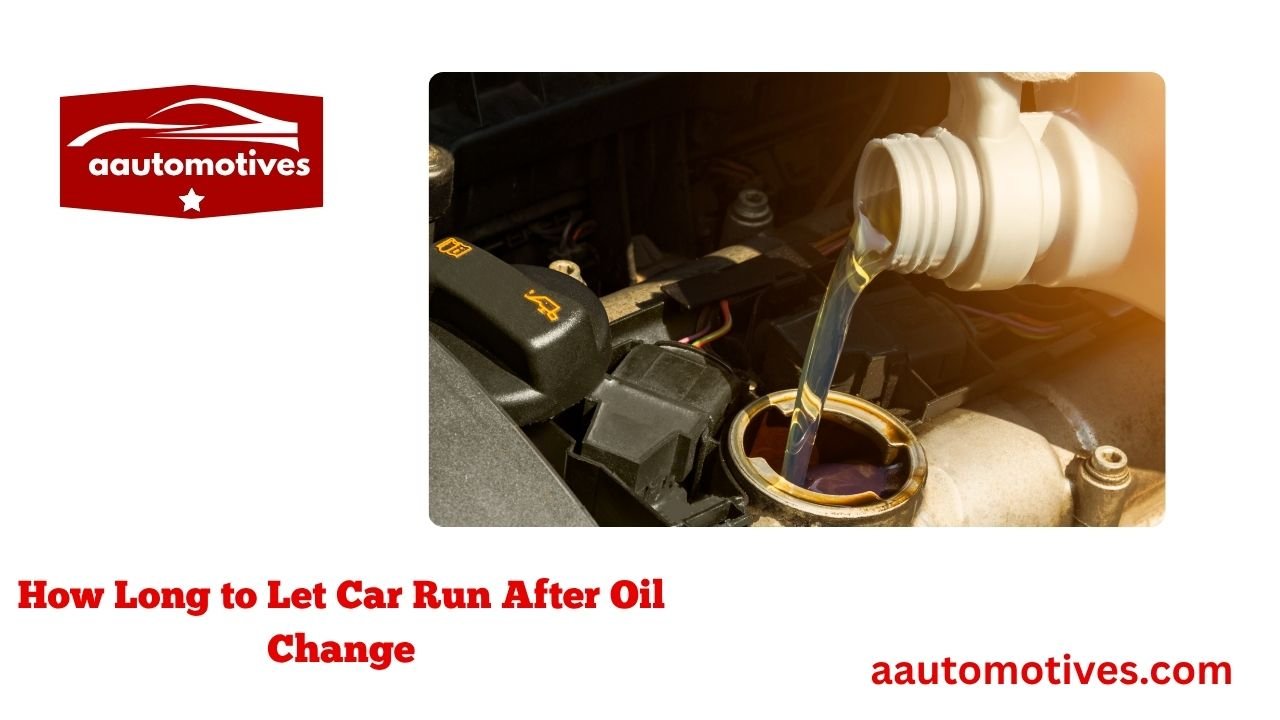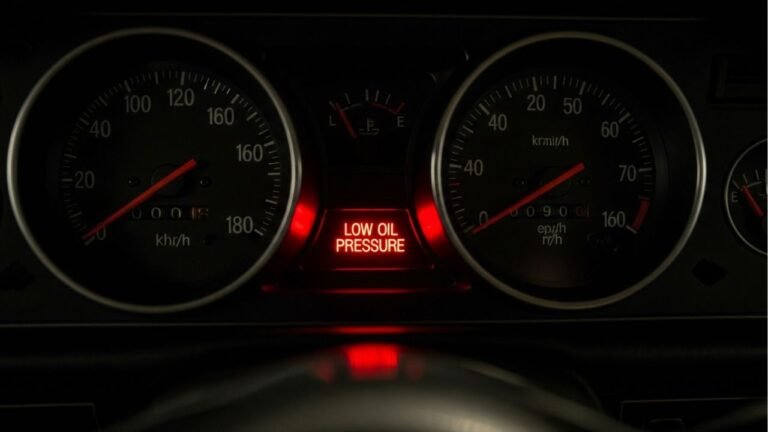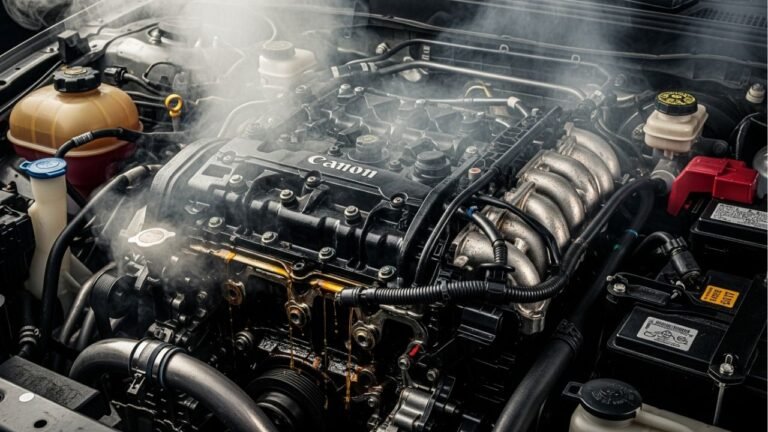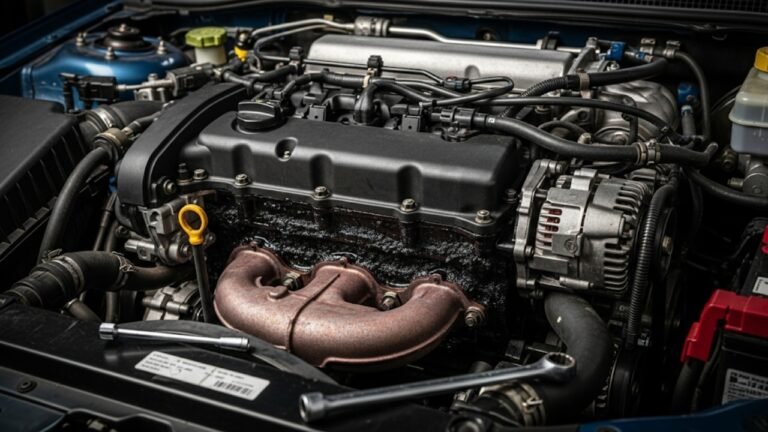How Long to Let Car Run After Oil Change

You’ve just changed your oil. The tools are put away. Your hands are still a little greasy. You wipe your brow, feeling a small sense of pride—you did it. But then it hits you: “How long to let car run after Oil Change?”
This small detail, believe it or not, matters more than most people think. Letting your car idle or run for the right amount of time post oil change can determine how well the oil circulates, detects leaks, and ensures your engine gets off to a clean start.
In this article, we’ll dive deep into the why, how, and what happens if you don’t, while keeping the vibe friendly and easy to understand—like we’re having a real chat in your garage, cup of coffee in hand.
The Moment After the Oil Change: What’s Really Happening Inside the Engine?

During an oil change, especially if you’ve replaced the filter, your oil passages are still empty. The filter needs to be filled, and the oil has to reach every corner of the engine. If you start driving too soon, that fresh oil may not have fully done its job yet.
So, how long to let car run after Oil Change? Mechanics and car lovers often agree: let it idle for about 5 minutes. This is enough time for the oil to reach normal operating pressure, fill the oil filter, and coat the moving parts with fresh protection.
Key internal processes during first 5 minutes after oil change:
- Oil filter fills completely
- Pressure builds in oil lines
- Lubrication begins across all engine parts
- Temperature begins to rise (but not overheat)
- Signs of leaks can be detected under the car
Letting the engine run is like giving it a chance to stretch after waking up. It’s not sprinting yet, just doing a few yoga poses to get the blood (or oil) flowing.
The Sweet Spot: Why 5 Minutes Is the Golden Rule
Let’s break this down. The ideal engine idle time after an oil change is about five minutes. But why exactly this number?
Think of oil like a warm coat on a cold morning. Your engine’s parts need that coat before they start working hard. Five minutes allows:
- The oil to warm up slightly, improving its flow.
- The oil pump to circulate the new oil completely.
- You to check for any leaks or drips from the drain plug or filter.
- The engine computer to register the fresh oil and possibly reset data.
This step also gives you a moment to listen for unusual sounds. A knocking noise, for instance, might signal something is wrong with oil flow or filter installation.
Here’s a quick table showing the breakdown of what happens at each minute during that 5-minute idle:
| Minute | What Happens |
| 1 | Oil begins circulating through the system |
| 2 | Filter fills and pressure stabilizes |
| 3 | Engine warms slightly, allowing smoother oil flow |
| 4 | Oil reaches tight spaces and small parts |
| 5 | Full circulation achieved, leaks checked |
If you’re ever unsure, set a 5-minute timer. Sip your coffee. Stand near the car. Watch for drips. It’s a simple habit that adds years to your engine’s life.
Real-World Experience: What Happened When I Skipped This Step
I remember the first time I changed the oil on my old Civic. I was 18, still new to working on cars. Feeling proud, I jumped in and took off for a drive. Five minutes in, the oil pressure light flickered. My stomach dropped.
What happened? I hadn’t let the car run after the oil change. The oil filter hadn’t filled properly, and there was a momentary loss of pressure. Luckily, I pulled over quickly, turned off the engine, and checked everything. No damage—but I learned a lesson that day.
This brings us back to the key question: how long to let car run after Oil Change? That simple 5-minute idle would have saved me a lot of panic. I’ve never skipped it again.
Sometimes, it’s not about what you do under the hood. It’s about what you do right after. Those five minutes can save your engine from early wear.
Cold Starts vs. Warm Engines: Timing Matters
Did you do the oil change in winter? Or was it a warm summer afternoon? That can make a difference too.
Engines behave differently depending on the weather. A cold start—like in early morning or during winter—means the oil is thicker and needs more time to flow. On colder days, you might consider letting the car run up to 7 minutes after an oil change.
In summer, however, 5 minutes is usually just right. The oil flows easier when warm, so circulation happens quicker. Still, it doesn’t hurt to give it a little breathing space.
Seasonal guidelines for post-oil-change idling:
- Winter/cold start: 6–7 minutes
- Mild climate: 5 minutes
- Hot day/summer: 4–5 minutes
If you’re wondering why timing matters, think of it like warming up before exercise. You wouldn’t sprint without stretching, right? Same goes for your car. Giving it that idle time lets the engine “stretch” before it runs.
What If You Don’t Let the Engine Run?
This part is a bit like skipping flossing. It won’t destroy your teeth today, but do it enough times and you’ll feel the consequences.
If you don’t let your car run after an oil change:
- Oil may not reach critical components before you start driving
- The oil pressure sensor may trigger a warning light
- You might miss a slow leak from a loose filter or drain plug
- Internal parts may wear down quicker over time
Your engine doesn’t scream right away, but over the months and miles, it notices. And just like that skipped flossing habit, small neglect leads to big costs later.
Imagine having to replace your engine years before expected—all because you didn’t wait a few minutes after your oil change. It’s not worth the risk.
DIY vs Mechanic: Who Does It Better and Why Running Time Still Counts
Whether you’re doing an oil change at home or having it done at a shop, the need to let the car run afterward remains the same. It’s not about who changed the oil, but what the engine needs next.
Mechanics usually follow this step like clockwork. After draining the old oil and refilling, they’ll often let the engine idle on the lift. It’s a built-in habit. They do this to confirm proper oil pressure and inspect for leaks.
But when we do it ourselves, sometimes we’re in a rush. Maybe you’re finishing up before work. Or it’s cold and you just want to get inside. But skipping that 5-minute run time is like leaving a job 95% done. It’s almost complete—but not fully.
If you ever take your car to a mechanic, ask them what they do after an oil change. You’ll hear things like:
- “We run it for 5–10 minutes.”
- “We check the filter seal and drain plug.”
- “We watch for pressure irregularities.”
Even pros know that this step is non-negotiable. So whether you’re wrenching in your driveway or paying a pro, let your car idle for a few minutes. Your engine will thank you.
Oil Light, Gauge, and Dipstick: Watching and Listening After the Change
This is where things get hands-on. After you start the engine post-oil-change, what should you be watching?
First, the oil pressure warning light. It should come on briefly at startup, then go off within 2–3 seconds. If it stays on longer than that, turn the engine off immediately. This usually means there’s no oil pressure—which could be due to a dry filter or forgotten oil fill.
Next, check the gauge (if your car has one). The pressure should rise steadily and stay within a normal range. A wild swing or drop? That’s a red flag.
Finally, after those 5 minutes, shut the engine off and pull the dipstick. Wipe it clean. Dip it again. Look at the oil level. If it’s below the “Full” mark, you may need to top off a little. That’s normal, especially if your oil filter took a good amount.
Checklist during and after engine idle:
✅ Oil light comes on briefly, then turns off
✅ Engine sounds normal, no knocking or ticking
✅ No oil drips under the car
✅ Oil gauge shows stable pressure
✅ Dipstick shows proper oil level
These small checks can catch a big problem before it ruins your day—or your engine.
The Emotional Side of Maintenance: Peace of Mind vs. Panic
There’s a certain peace in doing things the right way. A kind of calm that settles in after you take those five minutes to let your car run. It may sound strange, but there’s an emotional reward to treating your car with care.
You know that feeling when you leave the dentist and they say, “Good job, everything looks perfect”? That’s what it feels like when your car idles smoothly after an oil change. It tells you, “Hey, thanks for looking out for me.”
On the flip side, skipping that step can bring stress. What if something’s wrong? What if oil isn’t circulating? That kind of second-guessing eats at you. And worse, it can lead to costly repairs that were totally avoidable.
Taking five minutes is not just about oil. It’s about mindset. It’s about being someone who finishes strong. Someone who doesn’t just check boxes—but pays attention to what really matters.
The Bigger Picture: Longevity, Efficiency, and Responsibility
Letting your car run after an oil change may seem small. But like all small things, it adds up.
Engines that are well-lubricated run more efficiently. They burn less fuel. They emit fewer emissions. They last longer. And it all starts with good oil flow. That first few minutes after the change is when your engine decides how to “wear” that new oil.
Think about the lifespan of your engine. Would you rather it last 120,000 miles or 250,000+ miles? That kind of difference often comes down to small choices repeated over time. Choosing to let your car idle is one of those smart, lasting habits.
Here’s how 5-minute idling improves engine life over time:
| Action | Long-Term Benefit |
| Proper oil priming | Less friction, reduced wear |
| Leak detection | Avoids catastrophic oil loss |
| Pressure buildup | Optimizes lubrication on cold start |
| Filter fill-up | Immediate protection for engine parts |
Taking care of your car is a responsibility, but also a privilege. It gives you freedom. Mobility. Spontaneous road trips. Reliable school runs. All those beautiful little life moments that start with the turn of a key.
So when people ask, “how long to let car run after Oil Change”, the answer isn’t just five minutes. It’s five minutes of care, five minutes of investment, and five minutes of doing the right thing.
Making It a Habit: Don’t Just Do It—Do It Every Time
Now that you know what’s at stake, the real power lies in repetition. Make it a habit. Like buckling your seatbelt or checking your mirrors.
The next time you change your oil:
- Pour in the new oil slowly.
- Replace the filter snugly (but not too tight).
- Double-check the dipstick.
- Start the engine.
- Let it idle for at least 5 minutes.
- Check underneath the car for leaks.
- Recheck the dipstick.
- Smile—you just did it right.
Like brushing your teeth or locking the door behind you, this small action becomes automatic. And over the months and years, your car will show its gratitude by running smoother, longer, and safer.
You’ll save money. Avoid frustration. And maybe even impress your future self when you realize how reliable your vehicle has become.
Final Thoughts: The Engine Is Alive—Treat It That Way
At the end of the day, your engine isn’t just a machine. It’s a moving, breathing system that thrives on routine, rhythm, and respect.
So the next time someone asks you, “how long to let car run after Oil Change”, you’ll have the answer. And not just the number—but the reason behind it.
Tell them: “Five minutes. That’s how long it takes to protect your engine, check for leaks, and ensure smooth oil circulation.” And maybe share a story, a moment, or even this article.
Because this isn’t just about cars. It’s about habits, patience, and care. And when we do those little things right—again and again—life just runs a whole lot smoother.






